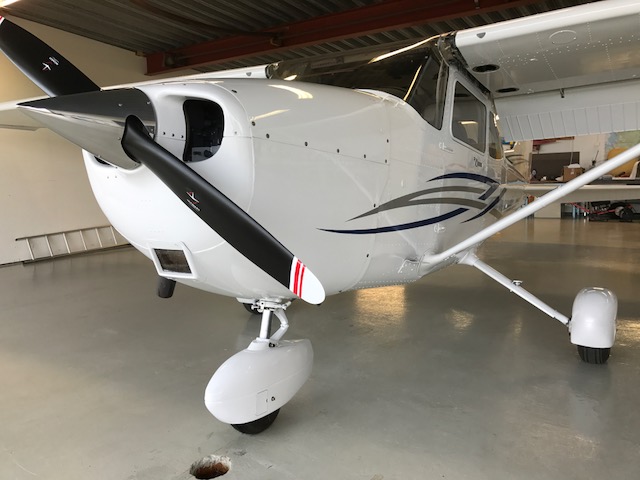I have a FM-300R, the Show Planes cowling, and a Lycoming Thunderbolt IO-540 with a cold air sump off of a L1B5 ordered the intake from Bryan and Showplanes, but things are pretty tight.
BLUF, here are the paths I am debating right now:
- Build a custom snorkel that is going to have some pretty sharp angles and a pretty funky setup around the FM-300R inlet
- Cut a hole in the Show Planes lower cowl and install a Rod Bower ram air setup and fairing
- Cut a hole in the Show Planes lower cowl and build a new air box/inlet
I have been swapping some components back and forth to see what option was going to be the best. To start, the FM-300R needs about 1/8" of additional clearance when using the 4 degree Airflow performance adapter. Right now I have been working with Don at Airflow and he has a cable bracket in prototype for this that not only holds the cables, but also gives me the additional clearance needed to fit the FM-300R with the L1B5 sump.
Airflow Performance straight spacer.
Airflow performance prototype linkage adapter.
This gets me pretty well setup without the cowl and intake. Getting the Showplanes snorkel intake in place with this setup is pretty tight. Well I guess it is a little more than tight as it doesn't fit. Here is the lower cowl installed in its final location with the FM-300 on a straight (NOT 4 degree) spacer. There is about 1" of clearance between the servo and the cowl.
I ordered the straight spacer because with the 4 degree spacer, the intake transition had some clearance issues with the PlanePower 70A externally regulated alternator. As a note, the larger tube is not even on the "T" yet, this is just the T without the step up to the larger diameter tube that goes over the air filters. Also, this is with the alternator in the center of adjustment. Obviously, nothing is cut here either. I still need to transition the T to the FM-300R which has a lip on it for clamping purposes. I could bring this version of the T aft a bit in order to gain a little more clearance.
With the 4 degree spacer, there is much more space to work with.
With the 4 degree spacer, the 1/8 control linkage adapter, and the lower cowl put in place, there is roughly 2.25 inches of clearance. Which is not that bad.
With 2.25 inches of clearance and the angle of the cowl, this is what a 4" tube for a T would look like.
Here is what a non-deformed 4-5/8"s looks like. Mind you I have not run the engine yet, and you would have to expect that there would be settling that is going to occur as well as movement while running. This is the final dimension of the stock Showplanes intake tubing.
For the left side of the intake, there is quite a bit of room to make the run directly up from where the notion T exists in the previous photos. The right side however there is not a lot of room between my vetterman (custom) exhaust and the PlanePower alternator. I was contemplating getting a smaller alternator, but I might as well not add those constraints to the setup if I am at this stage of the build.
This is pretty hard to see, but this photo is taken from the left side of the engine looking at the right with the T and the snorkel resting where ever I could get them to fit. The angles are possible to make, it is just a shame that this is the intake and there are going to be many >90 degree transitions.
Which really has me thinking why not just punch the intake straight out. I have been thinking about the Rod Bower design and I have an email out to him.
There are just sooo many bugs in Virginia that I feel like a large percentage of my flying is going to be with the ram air door closed sucking the warm air out of my lower cowling. I have been thinking about leveraging the C172 design.
I have also been looking at making that a little sexier and mimicking what the Sam James cowl looked like at one point.


























































